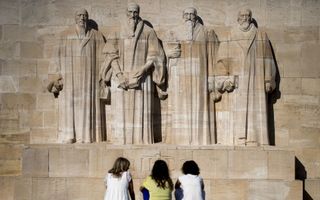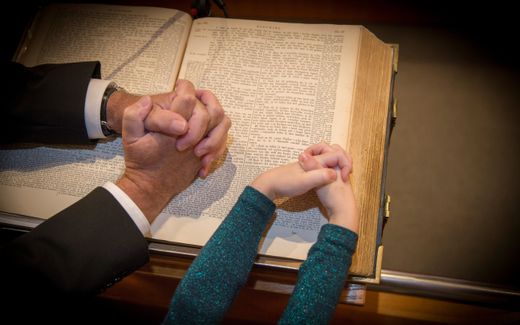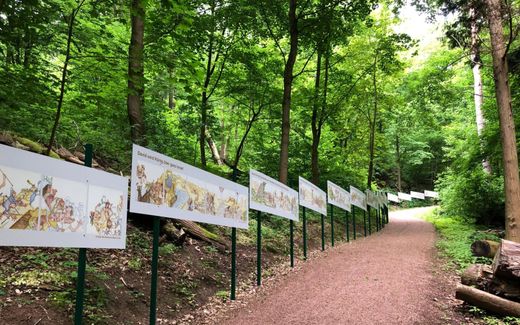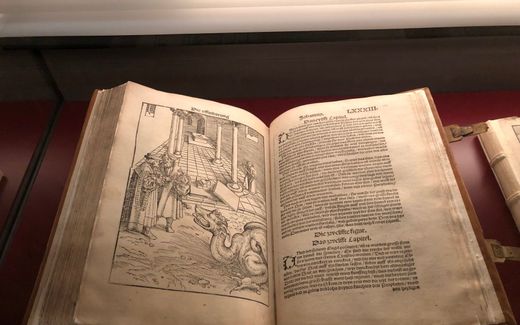Translating alongside Luther at the Wartburg Castle
29-06-2022
Central Europe
Geerten Moerkerken, RD
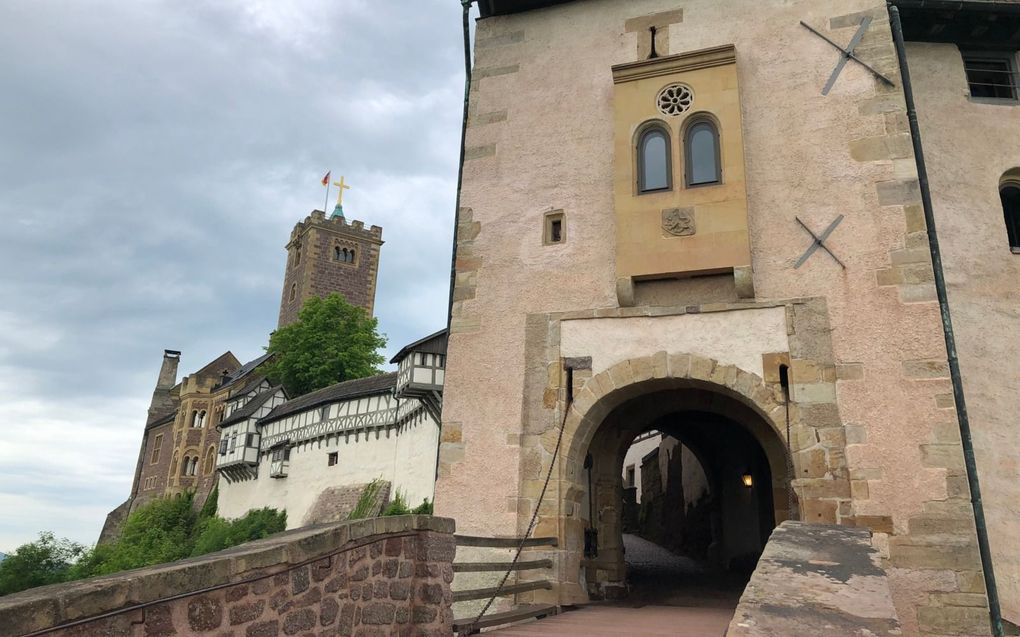
Photo RD
Central Europe
The Wartburg Castle in Eisenach dedicates an exhibition to Luther's translation of the Bible, which was created five centuries ago.
Although the high season has not yet started, the Wartburg Castle is already crowded on this sweltering morning in May. The castle near Eisenach - listed as a UNESCO World Heritage Site - attracts some 350,000 visitors from all over the world every year. Many of them come to the castle because of the man who spent just under a year there in the 16th century: Martin Luther.
The reformer did not come to the castle to spend a holiday. He was forced to go into hiding there after the Emperor declared him an outlaw. Nor did Luther sit still: in just eleven weeks at the Wartburg, he translated the New Testament into German.
After Luther returned to his hometown of Wittenberg, he critically reviewed his work with colleagues. In September 1522 - this year 500 years ago - the first edition of the New Testament appeared: it became known as the September Testament. A translation of the entire Bible appeared twelve years later, in 1534. It would become known as the Luther Bible, the leading translation of the Bible in Germany for centuries.
Time travel
Luther's translation is being commemorated in Germany in many ways and places this year. This includes the location where it all began: the Wartburg. On May 4, 501 years after Luther was brought to the castle by a staged kidnapping, the exhibition "Luther übersetzt. Von der Macht der Worte" (Luther translated; about the power of words) opened here.
Luther's history was always tangible at the Wartburg, for example, when visiting the Lutherstube: Luther's study. The new exhibition sheds light on his Bible translation work and is intended as a "time travel from the 16th century to the present".
There is no escaping the past; it is what anyone who walks across the drawbridge steps into. However, it is mainly the 19th century that you see. In that century, the interest in history was revived, and the castle took on its current form. Visitors can tour the castle with an audio tour.
Gemstones
A replica of a travel carriage from Luther's time in the courtyard takes visitors back a bit further in time, as do numerous fragments in the exhibition room inside the castle, including Bible prints and correspondence. Like a letter Luther sent to Spalatinus, the Elector's secretary, on March 30 1522. The reformer had come across a number of precious gemstones in Revelation 21 but did not know what they looked like. Could Spalatinus take a look in his boss' treasury and send him some gems so that Luther could see them with his own eyes?

Interactive is a "print workshop" and a "translation workshop". In the first one, visitors can see a replica of a 16th-century printing press. They can also operate it to make their own title page of the Bible.
Accents
The translation workshop engages the public in the art of Bible translation in an accessible way. A game shows how many words and expressions the German language gained through Luther's work. The Christmas story from Luke 2 can be heard in ten accents, and it is striking how different German can sound. You can decipher Greek words or compare how one Bible text is rendered in six German translations.
The texts in the workshop are written in German. Nevertheless, for the average -also younger- foreign visitor there is more than enough to understand from the interactive exhibition.
Reaction
The exhibition also reflects on the current use of the Bible, presenting, for example, the travel Bible of Dr Heinrich Bedford-Strohm, the former council president of the Evangelical Church in Germany.
In the same room, visitors can write their reflections on Luther's translation. Several dozen leaves hang on the castle wall. "Luther changed the world', someone wrote. Another scribbled down: "I am ashamed to be a Catholic." One visitor shows himself as an evangelist in his paper: "God is great and can change your life too. Read the Bible for ten minutes every day. It pays off."
The exhibition "Luther übersetzt. Von der Macht der Worte" can be seen at the Wartburg until November 6.
This article was translated by CNE.news and previously published in Dutch daily Reformatorisch Dagblad, on June 25th, 2022.
Related Articles

